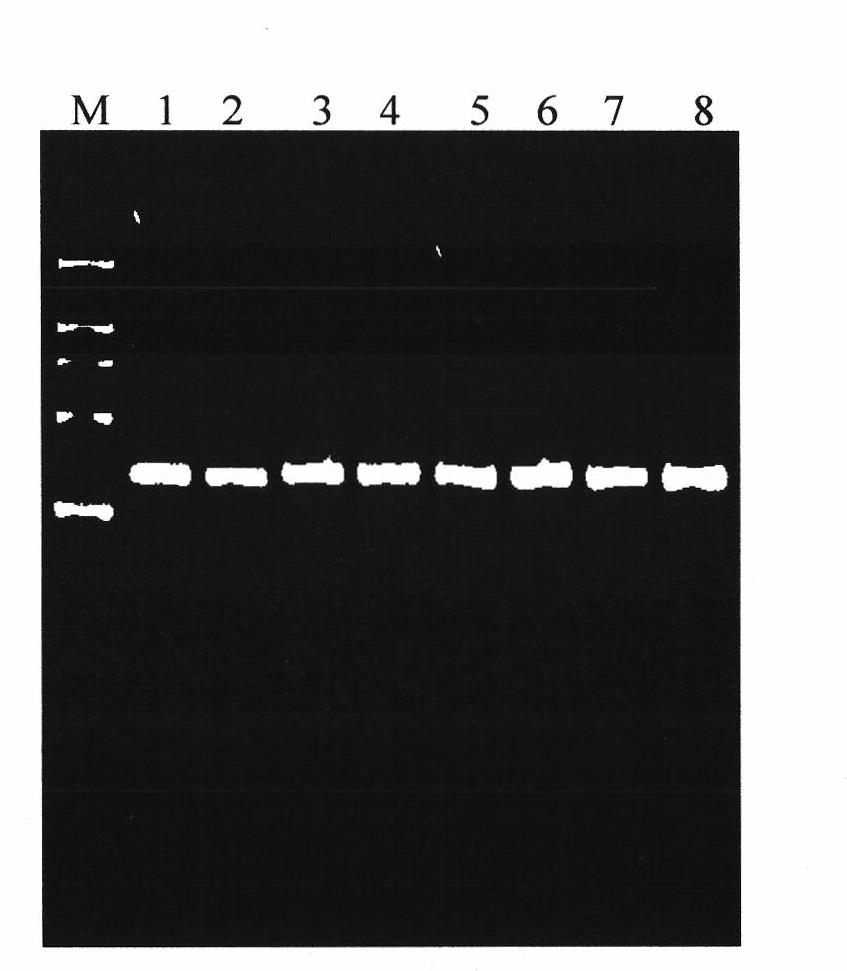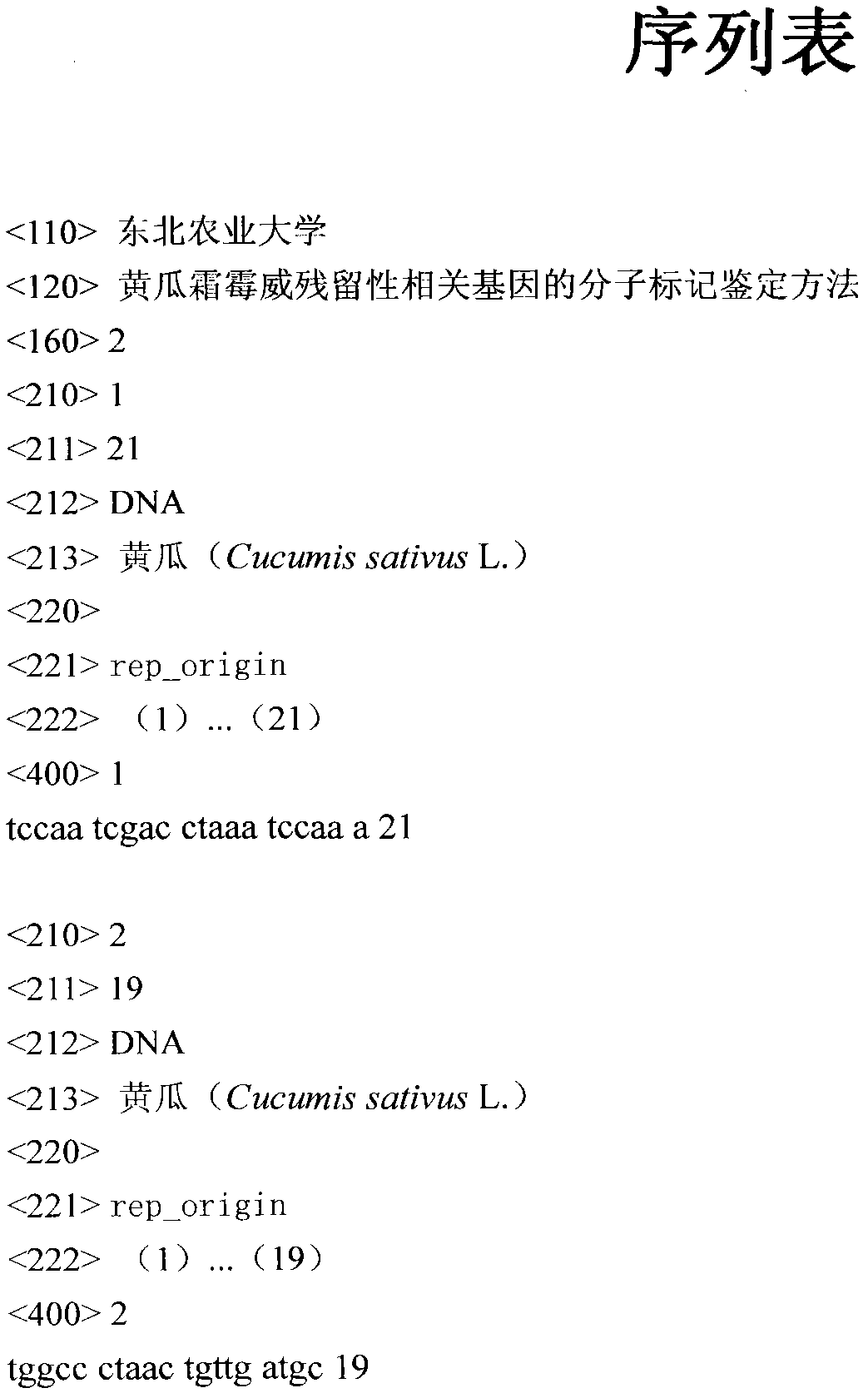Molecular marker authenticating method for related gene of cucumber propamocarb residue
A technology of molecular markers and identification methods, applied in the field of plant biology, can solve the problems of low pesticide residue content, achieve simple operation, high efficiency, and improve breeding efficiency
- Summary
- Abstract
- Description
- Claims
- Application Information
AI Technical Summary
Problems solved by technology
Method used
Image
Examples
Embodiment 1
[0020] A molecular marker identification method for cucumber propamocarb residue-related genes, the method comprising the steps of:
[0021] Use the DNA of cucumber varieties or strains with unknown propamocarb residues as templates, and use CSWCT14 as primers to perform PCR amplification, and perform 3% agarose gel electrophoresis on the amplified products or carry out 7.5% denaturation polymerization on the amplified products. Acrylamide gel electrophoresis detection, if the amplified band pattern is consistent with the known low propamocarb residual cucumber Dongnong 803 band pattern, then the cucumber variety or line with unknown propamocarb residue is low propamocarb For residual varieties or strains, the PCR amplification procedure is: pre-denaturation at 94°C for 5 minutes, denaturation at 94°C for 30 seconds, annealing at 57°C for 1 minute, 35 cycles, extension at 72°C for 1 minute, extension at 72°C for 10 minutes, and finally storage at 4°C. The CSWCT14 is:
[0022]...
Embodiment 2
[0025] In the molecular marker identification method of cucumber propamocarb residue-related genes, in the PCR amplification, the PCR reaction system of every 20 μl is as follows: 10×buffer: 2 μl, 2mM dNTP: 2 μl, 10 pmol / μl of Primer 1: 0.8 μl, 10 pmol / μl Primer 2: 0.8 μl, 25 mM MgCl 2 : 2.5 μl, 5 U / μl TaqDNA polymerase: 0.2 μl, 60 ng / μl template DNA: 1 μl, ddH2O: 10.7 μl.
Embodiment 3
[0027] Application of molecular marker identification method for cucumber propamocarb residue-related genes in assisting selection of pollution-free cucumber materials.
[0028] Using the new cucumber hybrid varieties Dongnong 804 and Dongnong 805 bred by the cucumber research group of the College of Horticulture of Northeast Agricultural University as materials; extract the DNA of a single plant as a template, and use a cucumber propamocarb residue-related molecular marker provided by the present invention CSWCT14 was used as a primer for PCR amplification. The results showed that the PCR amplification band patterns of Dongnong 804 and Dongnong 805 were completely consistent with the low propamocarb residue control Dongnong 803, and the PCR detection results were consistent with the experimental results. The coincidence rate of laboratory identification results was 100%, which proved that CSWCT14 is a practical molecular marker for the detection of propamocarb residues in cucu...
PUM
 Login to View More
Login to View More Abstract
Description
Claims
Application Information
 Login to View More
Login to View More - R&D
- Intellectual Property
- Life Sciences
- Materials
- Tech Scout
- Unparalleled Data Quality
- Higher Quality Content
- 60% Fewer Hallucinations
Browse by: Latest US Patents, China's latest patents, Technical Efficacy Thesaurus, Application Domain, Technology Topic, Popular Technical Reports.
© 2025 PatSnap. All rights reserved.Legal|Privacy policy|Modern Slavery Act Transparency Statement|Sitemap|About US| Contact US: help@patsnap.com



